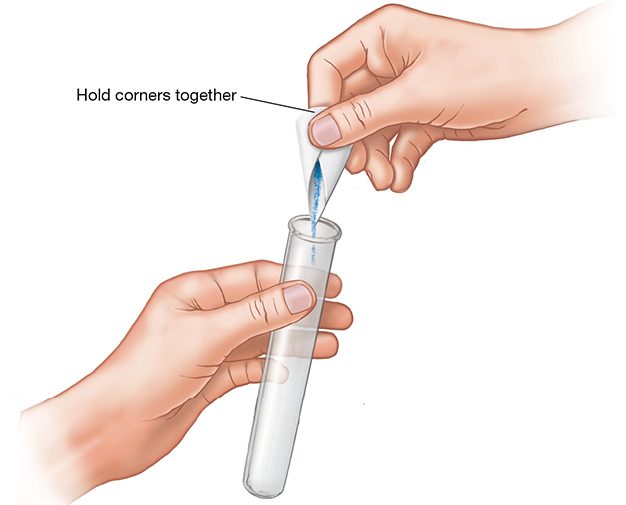You will often need to manipulate or transfer samples of solids in order to examine them during an experiment. Most often, the solids you encounter in a chemistry laboratory are in a small crystalline or powder form. A scoopula (Figure 1) is generally the most effective tool for transferring these substances from one container to another. Microspatulas are not ideal for this purpose because the material can easily fall off the sides of the implement while moving it. Microspatulas are excellent for mixing small amounts of solid material or scraping bits of solid from a surface. To avoid spills during transfer, always hold the source container as close as possible to the destination.

Figure 1. Tools for transferring solids.
Weigh boats and weigh paper also are conveniently used to aid sample transfer into a small-mouthed container such as a test tube or Erlenmeyer flask (Figure 2). Folding the paper or boat in a corner-to-corner fashion produces a sort of flexible funnel. Placing the tip end into the mouth of the container directs the solids into the container. A spatula may be used to help push any material that sticks to the paper.

Figure 2. Pieces of weigh paper can be folded diagonally to generate a flexible “funnel” for transferring solids into small-mouthed containers.
